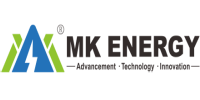In the battery production process, demand forecasting can ensure efficient operations and meet customers’ multi-faceted needs for energy storage batteries. As a battery solutions provider factory with many years of experience, Mk Energy relies on advanced technology and analytical tools to accurately predict market demand, optimize production plans, and manage inventory levels. In this article, we explore the intricacies of demand forecasting technology in factories as a battery solution provider and the benefits it can bring to users.
The importance of accurate demand forecasting
Accurate demand forecasting is essential for a battery solution provider factory as it allows us to plan production schedules effectively, optimize inventory management, and meet customer demand promptly. Demand for energy storage batteries in the battery industry fluctuates based on various factors, including user trends, technological advancements, and regulatory changes, making accurate forecasts critical. By accurately forecasting demand, we ensure they have the right quantities of raw materials, components, and production capacity at the right time. This prevents underproduction and overproduction. Additionally, accurate demand forecasting enables us to predict market trends and adjust its products accordingly.
Methodology and approaches for battery solutions provider factory demand forecasting
Demand forecasting at battery solutions provider factory plants combines methodologies and methods tailored to industry-specific characteristics. The most basic method is to analyze historical sales data, considering seasonal trends, market fluctuations, and product life cycle stages. Extrapolate future trends by identifying patterns and correlations in past demand. Another is to conduct comprehensive market research to gain insights into user behavior and demand drivers and adjust production accordingly. At the same time, we will continue to monitor advances in battery technology, such as improved energy density, longer service life, and faster charging capabilities, to measure future demand for innovative products and incorporate them into forecast models.
Leverage data analytics for demand forecasting
Leveraging data analytics techniques is critical for accurate forecasting, as it collects various relevant data, including historical sales data, customer orders, market research reports, etc., to gain insights into demand patterns, market dynamics, and consumer preference drivers. By leveraging big data analytics, we can identify hidden patterns, trends, and correlations in the data, enabling more accurate demand forecasts and informed decisions. In addition, we also use relevant machine learning algorithms to process complex data sets and non-linear relationships to build more precise and flexible prediction models.
Effective demand forecasting integrated with supply chain management
Integration of supply chain management is critical for the seamless operations of the battery solutions provider factory. This involves coordinating activities such as raw material procurement, manufacturing, transportation, and distribution to ensure a stable supply of batteries while minimizing lead times and costs. So, by integrating demand forecasting with the supply chain planning process, we can optimize inventory levels, streamline production planning, and improve overall supply chain efficiency. This enables factories to respond quickly to changes in demand, shorten delivery times, and increase customer satisfaction.
Benefits of factory demand forecasting technology for battery solutions provider factory
Accurate demand forecasts enable battery solution provider factories to optimize production planning and resource allocation. So, by analyzing historical data, market trends, and customer behavior, factories can more accurately predict future demand for various types of batteries. This allows them to adjust production capacity and inventory levels accordingly, minimizing the risk of overproduction or shortages. Secondly, demand forecasting technology helps factories streamline their supply chain management processes. By anticipating demand fluctuations, factories can better coordinate with suppliers to ensure timely raw materials and components delivery, thereby shortening lead times. Demand forecasting technology also facilitates proactive decision-making and risk management. By identifying potential demand trends and market uncertainties, factories can develop contingency plans to mitigate risks. This agility, therefore, enables battery solution provider factories to quickly adapt to changing market conditions.
Drive efficiency and innovation
Demand forecasting technology enables battery solution provider factories to predict market demand, optimize production processes, and provide customers with quality products and services. Leveraging advanced analytics and technology can obtain relevant information about customer preferences, market trends, and competitive dynamics.




